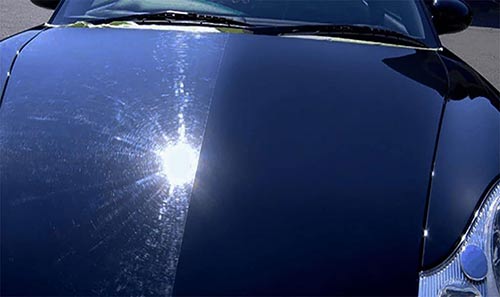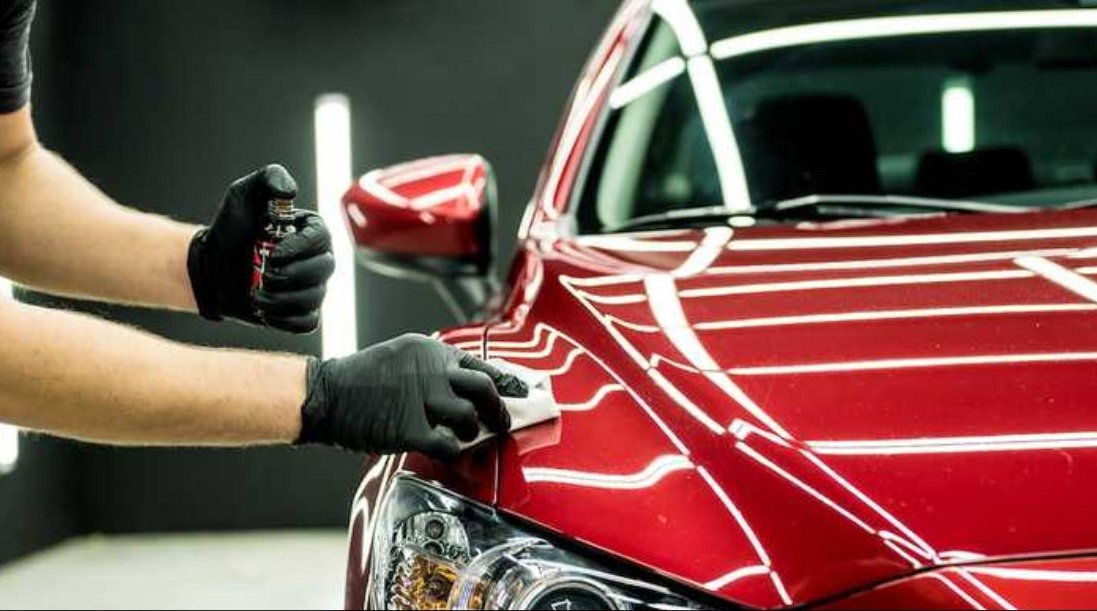Paint correction: Igniting the Sparkle in Your Vehicle
Welcome to our comprehensive paint correction guide! If you're passionate about keeping your vehicle in excellent condition or are simply inquisitive about the art of automobile detailing, you've come to the right place.
Paint correction is a skill worth acquiring, whether you're a car enthusiast, a proud owner wishing to restore your vehicle's showroom gloss, or a professional detailer looking to improve your skills. Discover the techniques and tools to remove swirl marks, scratches, and other flaws, altering the appearance of your car from dull to dazzling. So, let's plunge into the world of paint correction and bring out the best in your prized vehicle!
Types of Paint Correction
When it comes to paint correction, there are generally two main types, each catering to different levels of paint imperfections and desired outcomes.
One-Step Paint Correction: A less aggressive way to fix minor paint flaws and improve the overall appearance of the vehicle's paintwork is one-step paint correction. While it may not completely remove deeper scratches or serious defects, it does provide a notable improvement in the shine and clarity of the paint.
Two-Step Paint Correction: Two-step paint correction is a more complete and rigorous method that addresses a broader range of paint flaws. It typically comprises two distinct polishing stages. The first step is to remove moderate to heavy flaws with a more aggressive chemical. The second stage is to use a finer polish to smooth the paint surface and improve the shine and clarity.
What is Single Stage Paint correction?
Single-stage paint correction is a detailing procedure that aims to restore and improve the appearance of a vehicle's paintwork, essentially for vehicles outfitted with a single-stage paint system.
Single-stage paint is a less prevalent and older type of automotive paint system. It mixes the colour with a transparent protective coating in a single application. This means that the colour pigments and topcoat (clear coat) are blended in a single layer.
The single-step paint method was used in older automobiles, and some classic cars still have it. It offers simplicity in application and a glossy finish. The single-stage paint correction procedure is an exhaustive process that involves the use of various polishing techniques, compounds, and pads to remove flaws from the paint surface. During the correction procedure, expert detailers carefully level the paint surface by removing a very thin layer of clear coat and colour to eliminate or considerably decrease the appearance of the flaws. The goal is to obtain a smooth, defect-free, high-gloss surface.
Types of Paint Imperfections
Any flaws, blemishes, or damages that influence the appearance of the vehicle's paintwork are regarded as paint imperfections. These flaws might develop during the production process, transportation, or regular vehicle use.
Swirl marks are fine, circular scratches that are frequently created by poor washing methods, the use of aggressive cleaning products, or automatic car washes. They create a drab appearance, reducing the clarity of the paint surface.
Scratches are more serious than swirl marks and can be caused by factors like contact with rough objects, keys, or branches. Light surface scratches to deep, noticeable blemishes that penetrate the clear coat and colour layer are all possibilities.
A hologram, also known as a buffer trail or buffer hologram, is a form of paint defect that emerges as a result of incorrect machine polishing. Holograms appear on the paint surface as faint, parallel lines.
Water spots form when mineral-containing water droplets dry on the paint surface, leaving behind unattractive patches. They can etch into the paint if left neglected, making removal more difficult over time.
Bird droppings and tree sap can trigger chemical reactions with the paint, resulting in stains and etching.
Oxidation is a natural process during which the clear coat of paint breaks down due to exposure to UV rays and environmental pollutants. It produces a faded and chalky appearance, particularly on older automobiles.
Orange peel is a textured surface that occurs during the painting process and is caused by improper spraying techniques or inconsistent paint application.
Dealing with paint flaws requires a variety of remedial treatments such as paint correction (polishing), touch-up paint application, and repainting the affected areas. Seeking expert detailing services for more severe or extensive paint defects usually produces the greatest results.
Why is Paint Correction Essential?
Enhanced Aesthetics: Paint correction significantly improves the overall appearance of a vehicle's paint. By removing swirl marks, scratches, water spots, and other imperfections, the paint regains its depth, clarity, and gloss.
Surface Protection: Paint correction not only addresses existing imperfections but also helps to protect the paint surface. By levelling and smoothing the paint, it creates a more uniform and durable surface. This protection makes the paint less susceptible to harmful elements that can deteriorate the paint over time.
Restoration of Classic Cars: Paint correction is particularly crucial for classic cars or vehicles with single-stage paint systems. These cars often have unique paintwork that requires specialized care. Restoring their original paint quality through correction not only preserves the car's historical value but also enhances its aesthetics.
Do-It-Yourself or Seek Professional Help?
When it comes to paint restoration, automobile owners have two options: do it yourself (DIY) or seek the help of professional detailers. One of the most obvious advantages of DIY paint correction is its low cost. You can save money by doing it yourself instead of hiring a professional. Proper paint repair, however, requires a thorough understanding of processes, supplies, and tools. Without the proper expertise, there is a risk of doing more damage than good. Paint correction is also a time-consuming operation, particularly for beginners. Obtaining professional-level outcomes may necessitate numerous attempts and a substantial investment of time and effort.
While professional paint correction can be more expensive than a DIY method, professional detailers have the knowledge, skill, and experience to produce remarkable results. They can identify specific paint flaws and apply the best approaches for optimal correction. They use high-quality equipment and cutting-edge products that the average public does not have access to. This ensures that the paint repair process is more efficient and successful. Professional detailers can also finish paint correction procedures more quickly than most DIYers. This enables automobile owners to get back on the road sooner with a beautifully restored vehicle.
Conclusion
Thus, paint correction is a cutting-edge technique that reveals your vehicle's true potential. Your car can regain its showroom sheen and value by removing flaws, improving aesthetics, and protecting the paint surface. While DIY approaches are less expensive, professional services provide flawless results through skill and specialized instruments. Whatever path you choose, entering the field of paint correction opens the door to a world of automotive beauty and preservation.



